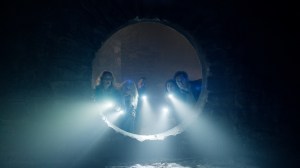Sometimes a horror movie can be awful throughout, then reach its worst moment right at the end, such as The Devil Inside and The Happening. Other times a horror movie can be generally solid most of its run time then reach a conclusion that’s either divisive, e.g. High Tension, or be outright unsatisfying, only serving to diminish the impact of what came before, such as The Turning. Then there are the horror movies where the ending is arguably the high point of the whole film, or at the very least a fitting, frightening conclusion bound to raise hairs on necks. Those are the horror movie endings that follow, those that scared folks, whether they’re the best part of the film or not.
Videos by ComicBook.com
The only caveat is that these are the horror movie endings that specifically put a mark on a certain generation: ’80s kids. To that end, that means these movies would have to be able to be watched by that specific audience, so it would have to have come out before 1985. So no Blair Witch Project or Scream here. Also, considering the title, spoilers will follow.
Psycho (1960)

Still frequently referenced to this day (including by Sabrina Carpenter), Alfred Hitchcock’s Psycho has a legacy rivaled by very few other horror classics, if any. It also features a brilliant lead performance from Anthony Perkins. His Norman Bates is a killer, sure, but at the same time he earns the audience’s empathy.
Yet when the narrative has wrapped up and Bates is in the police station, the audience isn’t sure if he’s even truly himself anymore. The side of Bates that fought off his jealous, murderous mother personality seems to have been fully eliminated. His look at the camera, and effectively into the viewer’s soul, says it all. Plus, there’s the superimposed, subtle skull that overtakes his face as it fades to the film’s final image.
The Wicker Man (1973)

Before Midsommar there was The Wicker Man. This cult-focused horror movie follows Sergeant Neil Howie, a good man and police officer tasked with finding a missing girl on a Scottish island. The audience gets to know Howie and, by the end of the film, loses Howie.
Just before the credits roll, Howie is stuffed into a massive wicker man, which is set ablaze. It’s a horrible death, and extra impactful when one factors in the fact it happens to such a likable character all while the town we’ve inhabited for the entire film cheers at his demise.
Don’t Look Now
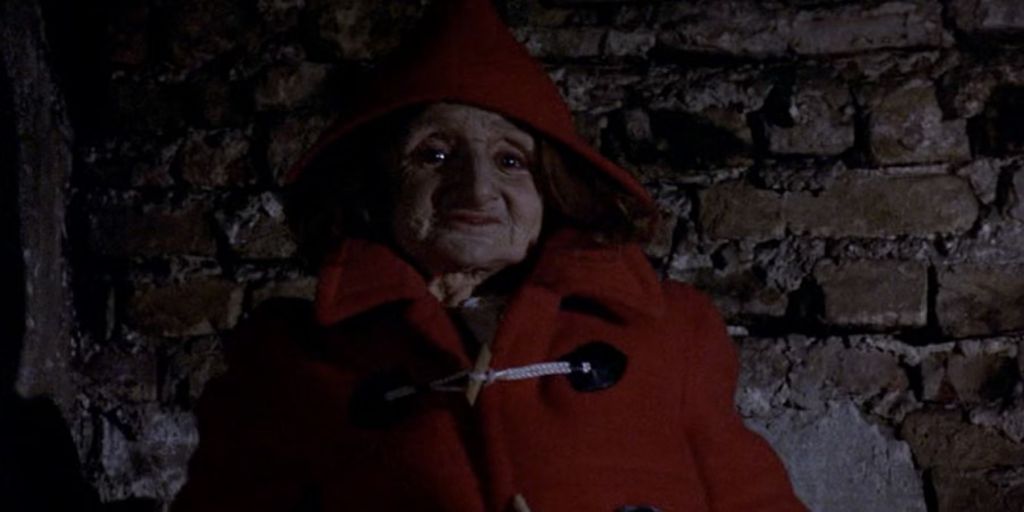
In this visually stunning and emotionally moving film, Donald Sutherland and Julie Christie star as John and Laura Baxter, a grieving couple whose daughter recently drowned. Now they’re in Venice and are told by a so-called psychic woman that she’s seen the spirit of their daughter.
Initially finding it absurd, John nonetheless soon finds himself seeing things. Gradually, he develops a growing hope that he too could see his daughter again, even if it’s just her spirit. And, when he sees a small individual walking away from him wearing a red raincoat very similar to his daughter’s, he decides to pursue it. Then, that individual turns around and slits his throat. Given all that the narrative establishes, it’s devastating on multiple levels. What parent wouldn’t follow any lead to get another moment with their deceased child?
The Texas Chain Saw Massacre
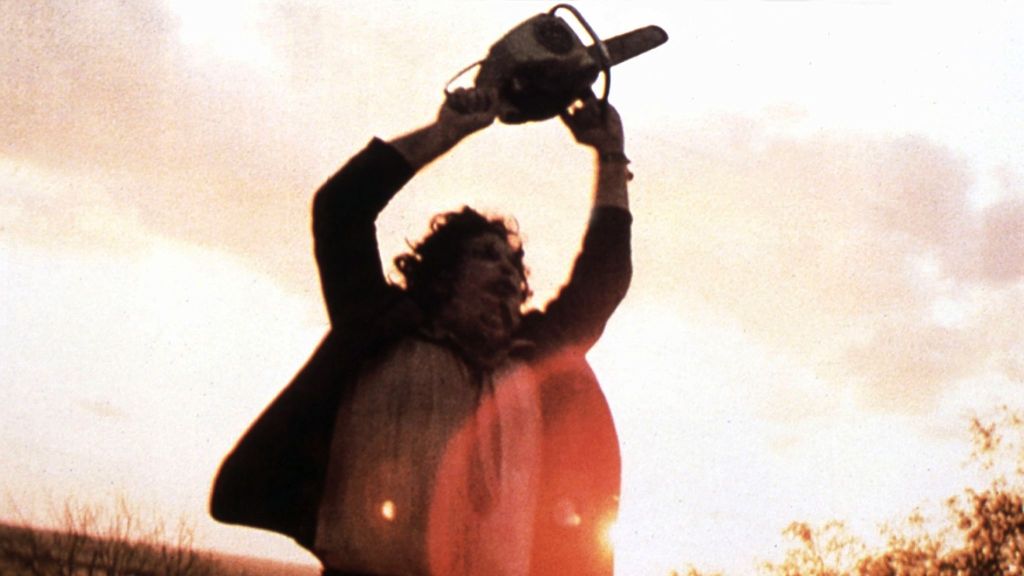
Tobe Hooper’s The Texas Chain Saw Massacre is one of the scariest films ever made, for several reasons. Chief among them is the notion that absolutely none of it is that far removed from reality. It’s a nightmare that Marilyn Burns’ Sally Hardesty barely survives. Barely.
One could look at the ending either as terrifying or fairly unscary. There’s not much middle ground. Hardesty survives her run-in with the Sawyer family, but that’s only physically. Her frantic screaming as she sits in the bed of a truck, speeding away from the Sawyer property, has some relief infused in it, but the viewer also gets the sense that she is forever altered as a human being in a major way. Toss in the fact that Leatherface is still alive and well, disappointedly twirling his chainsaw around, and the viewer is left with a palpably bittersweet feeling.
[RELATED: 8 Things You Probably Didn’t Know About The Texas Chain Saw Massacre]
Black Christmas (1974)

From Porky’s and A Christmas Story director Bob Clark, 1974’s Black Christmas couldn’t be any more different from his other holiday classic. The film is terrifying from front to back, even if not to the extent of Clark’s Baby Geniuses. By the end of the film, all of Jess Bradford’s (the late Olivia Hussey) housemates are dead. Worse yet, the mysterious assailant is now after her.
Hiding in the basement, she’s approached by her boyfriend and, thinking he is the killer due to his anger over her consideration of an abortion, she kills him. To make matters even worse, she’s wrong. The killer is still alive, he’s still in the house, the audience still has no clue who he is, and the police believe Jess’ boyfriend was the killer just as much as she still does. It’s an incredibly well-orchestrated finale, including the undercurrent of purveying fear that the film’s madman is still on the loose.
Carrie (1976)

Brian De Palma’s Carrie was a trendsetter, and not just because it was the first cinematic adaptation of Stephen King’s now expansive bibliography. It’s a classic that many find to be one of the scariest films ever made, which includes the conclusion.
Amy Irving’s Sue Snell approaches the grave of the now-deceased Carrie White, who telekinetically killed most of her high school classmates (and a teacher) and then did the same to her mother. Approaching the grave in a dreamlike trance, Snell bends forward, at which point White’s hand rises from the grave.
Invasion of the Body Snatchers (1978)
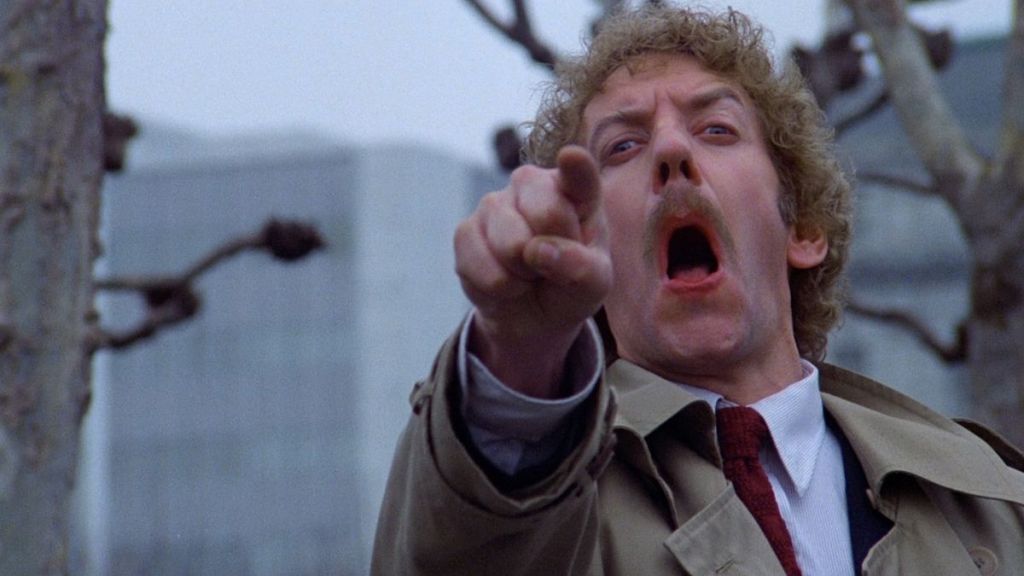
The vast majority of remakes aren’t as good as the original, even fewer are better than the original. But chalk 1978’s Invasion of the Body Snatcher up to nothing short of a trend-bucking, paranoia-infused masterwork.
This applies all the way up to its ending. The audience has spent two hours with Donald Sutherland’s Matthew Bennell as the protagonist. They’ve gotten to know him, even like him (not unlike with The Wicker Man). Yet, when Veronica Cartwright’s Nancy Bellicec approaches her friend, with a look of joy that says, “Finally, I’ve been so scared and alone for the past day,” it’s that very show of emotion that makes the pod-person in the shape of her friend reveal himself with a screech and a point of his index finger.
Friday the 13th (1980)
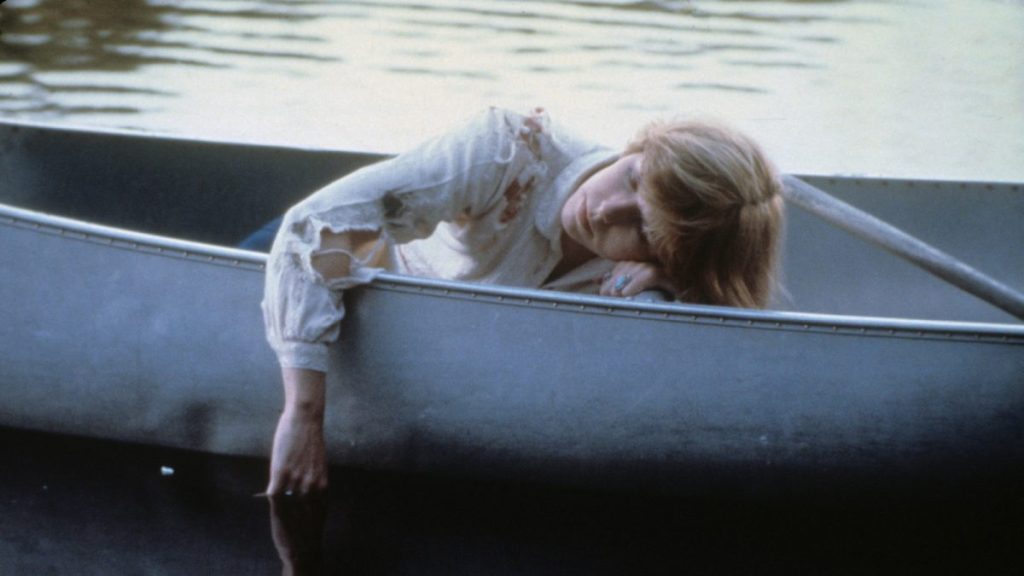
Before Jason got his hockey mask, before he even did any of the killing himself, he was just a part of a nightmare. The original Friday the 13th took a page or six out of the playbook of John Carpenter’s Halloween, but it also took one out of De Palma’s Carrie. And, truthfully, the ending of Friday the 13th is far better than Carrie‘s.
In Carrie, the audience sort of sees it coming. The music is dreamy, the visuals are suddenly extra bright and, most telling, a rock at the grave site moves a few seconds before Carrie’s hand emerges. In Friday the 13th, only that dreamy music element applies. As Alice strokes her hand over Crystal Lake the audience feels as safe as she does, especially once the cops are revealed to have arrived. Then, a moss-covered and somewhat deformed boy leaps up with a horrible scream. Even if viewed several times, the ending is jarring.
Sleepaway Camp
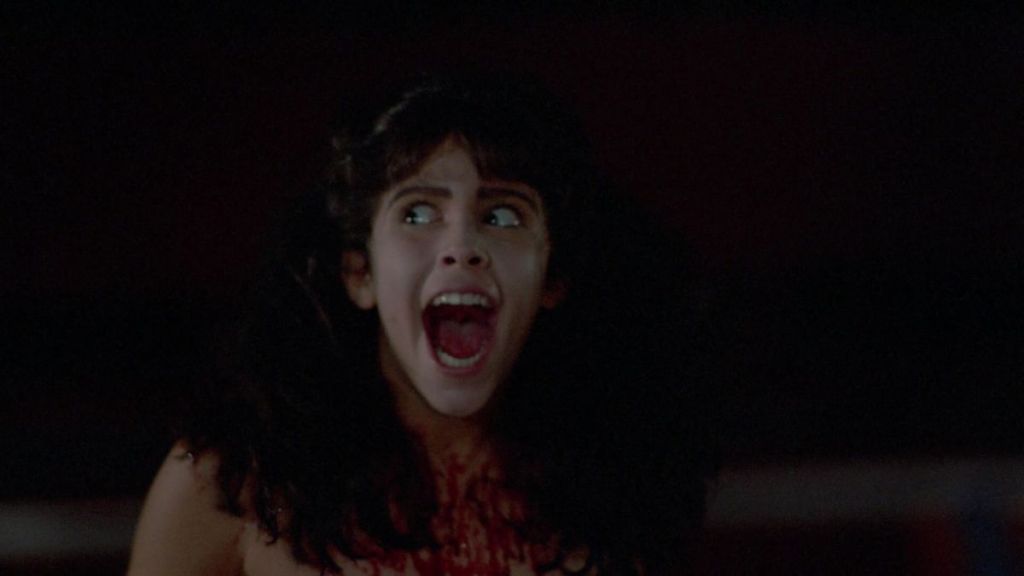
One of the better slightly below A-list slashers out there, Sleepaway Camp is fairly brutal and, when it comes to the ending, utterly unforgettable. It’s arguably not politically correct at this point in time to reveal that Felissa Rose’s Angela Baker is not only actually a little boy, but also the (apparently feral) killer. In a way the ending makes the transgender community seem violent, a trope that was clearly harmful.
But, if one were to watch the movie without any knowledge of what is to come, there’s no doubt it’s one of cinema history’s most surprising conclusions. Toss in the look on Rose’s face (then a young man with a plaster cast of Rose’s face for the wide shot) and it’s the stuff of which nightmares are made.
A Nightmare on Elm Street (1984)
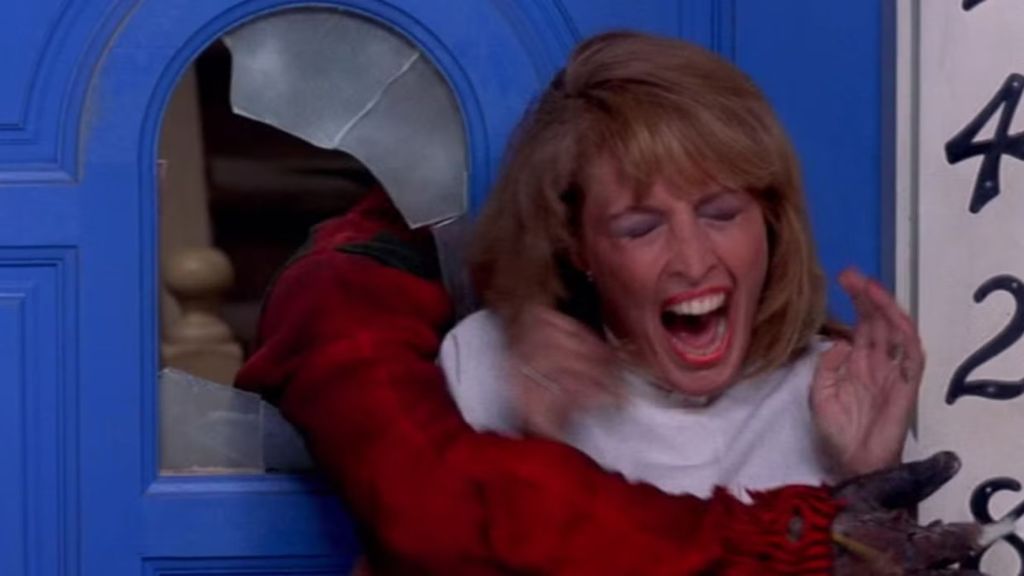
The first and still-best A Nightmare on Elm Street isn’t entirely flawless, but it’s close. There are two pressing issues: the pudding stairs scene (which was not director Wes Craven’s idea, it should be noted) and the closing scare. Yet, unlike with the pudding stairs, there’s a defense for A Nightmare on Elm Street‘s closing scene.
For one, it did scare some people. Two, were the film to just cut to credits as soon as Nancy turns her back on Freddy, it would be extremely jarring. Three, why not have a Freddy car? And four, while it looks incredibly goofy today, the shot of Freddy pulling Marge Thompson through a small window with what is apparently the force of a GE9X aircraft engine is hard to forget.






